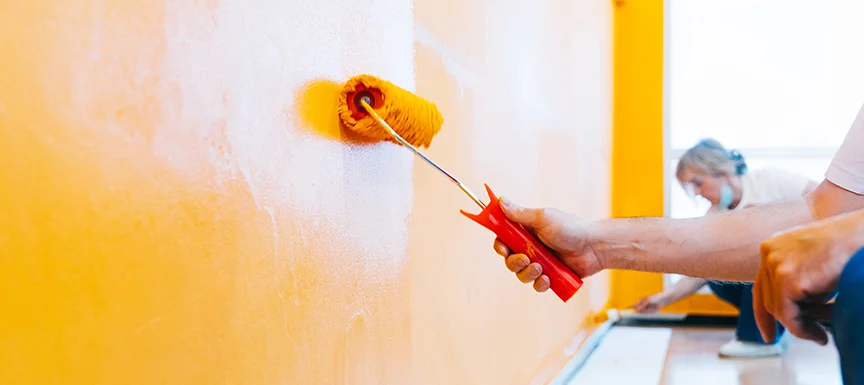Menu

Key Takeaways✔ Lead-free paints eliminate harmful toxins, ensuring safer environments for families and workers. ✔ By reducing contamination of soil and water, lead-free paints contribute to a cleaner and healthier planet. ✔ Using lead-free paints ensures compliance with global safety and environmental laws, avoiding legal risks. ✔ Their durability and safety reduce maintenance costs and long-term liabilities for homeowners and businesses. ✔ Choosing lead-free paints supports innovation and promotes environmentally responsible practices. ✔ Modern lead-free formulations deliver exceptional durability and stunning finishes, rivaling traditional options. |
Lead paint remains one of the most common sources of lead exposure, posing significant health and environmental risks. As awareness grows about its dangers, the shift toward lead-free paints is becoming essential for safer homes, workplaces, and communities. Beyond their safety benefits, lead-free paints align with eco-friendly painting practices, ensuring high performance while protecting both people and the planet.
Here are six compelling reasons why lead-free paints are shaping the future of sustainable and responsible painting.
Lead-free paints are an essential step toward building safer, healthier environments for families, workers, and communities. Traditional lead-based paints, while once popular for their durability and finish, release harmful lead particles over time. These particles pose significant health hazards, particularly for vulnerable groups such as children, pregnant women, and the elderly.
Lead is a toxic substance that, when ingested or inhaled, can accumulate in the body, causing both immediate and long-term health problems. Over time, lead-based paints degrade, releasing fine particles into the air and contaminating surfaces.
Lead exposure is directly linked to severe neurological and developmental issues, particularly in children. Even small amounts of lead can have long-term consequences for brain function, behavior, and overall well-being.
Lead-free paints play a crucial role in preserving the environment by eliminating harmful contaminants associated with traditional lead-based products. Their adoption reflects a commitment to sustainable painting practices and eco-conscious living.
The use of lead-free paints significantly reduces the risk of lead leaching into natural resources. This benefit is particularly impactful in safeguarding ecosystems and human health.
Adopting lead-free paints contributes to environmentally responsible home improvement practices. These paints align with green initiatives that prioritize sustainability and long-term ecological health.
Lead-free paints are a cornerstone of sustainable painting practices. Their usage aligns with a broader effort to reduce hazardous waste and protect ecosystems.
Using lead-free paint aligns with important global regulations and safety standards. This ensures both compliance with laws and prioritization of public health and the environment.
Many countries have introduced strict bans and restrictions on lead in paint due to its harmful effects. Lead-free paint services make it easier to comply with these legal requirements and avoid potential penalties.
The shift toward lead-free paint services not only protects health and the environment but also provides significant economic advantages.
Using lead-free paint significantly lowers the risks of costly health-related issues and legal liabilities. Lead exposure from traditional paints has been linked to serious health problems, often leading to expensive lawsuits or remediation efforts.
Lead-free paints have become increasingly affordable, matching or even outperforming traditional paints in value. They provide cost-effective solutions without compromising quality, making them an excellent choice for long-term savings.
Lead-free paints are paving the way for a safer and more sustainable future in the painting industry. By embracing innovative practices and materials, manufacturers and service providers are setting a strong precedent for environmentally and socially responsible choices.
The shift towards lead-free paint inspires manufacturers to develop advanced, safer alternatives that deliver excellent performance while protecting health and the environment.
The adoption of lead-free paint services is not just a local change but a global movement that reflects a commitment to healthier communities and a greener planet.
Lead-free paints are transforming the painting industry by offering superior durability, exceptional finishes, and long-lasting results. These innovative formulations match or even surpass traditional lead-based paints in quality and performance while ensuring safety and sustainability.
Lead-free paints are designed to withstand the test of time, making them a preferred choice for both residential and commercial projects.
Beyond durability, lead-free paints offer unmatched aesthetic appeal, contributing to visually stunning results in every project.

Selecting the perfect color for your home is a vital step in any painting project. The right choice not only enhances your home’s aesthetic appeal but also influences mood, comfort, and even energy efficiency. Thoughtful consideration ensures that your investment in painting yields lasting satisfaction.
Each room or area in a home has a unique function, and its color can complement or enhance that purpose.
Lighting can dramatically alter how a color appears on a wall, making it crucial to evaluate colors in their intended space.
Colors evoke emotions and can set the tone for an entire home. Understanding their psychological impact ensures the right choice.
Eco-friendly paints can be applied using standard painting tools like brushes, rollers, and sprayers. However, it’s important to follow the manufacturer’s instructions, as some paints may have different drying times or coverage properties. Natural paints tend to dry slightly faster than conventional ones, so working efficiently is key. Using high-quality brushes and rollers can help achieve a smooth, even finish. Cleaning tools are easier too, as most eco-friendly paints are water-based and can be rinsed with soap and water.
Eco-friendly paints are an excellent choice for furniture and cabinetry. They’re available in finishes like satin, eggshell, and matte, which are ideal for these surfaces. Some brands even offer specialized paints for wood or metal, ensuring durability and a polished look. Natural paints tend to have excellent adhesion, especially when surfaces are properly prepared. Additionally, the lack of harmful chemicals ensures that painted furniture is safe for indoor use, even in children’s rooms. For added protection, eco-friendly sealants and topcoats are also available.
Eco-friendly paints are just as durable as traditional paints, and sometimes even more so. Their natural components often create a resilient finish that resists peeling and fading. Some eco-friendly options, like limewash, even strengthen over time as they react with the air. Proper preparation of surfaces and application techniques also contribute significantly to their longevity. Many eco-friendly paints are designed to withstand various weather conditions, making them ideal for both interior and exterior projects.
Eco-friendly paints often have a slightly higher upfront cost compared to conventional options. This is because they rely on natural, sustainably sourced ingredients that can be more expensive to produce. However, as demand increases and production scales up, prices are becoming more competitive. While the initial cost may be higher, eco-friendly paints can save money in the long run due to their durability and reduced maintenance needs. Some brands also offer mid-range options for those on a tighter budget.
Eco-friendly house painting typically involves natural, non-toxic, and biodegradable materials. Common ingredients include plant-based oils, natural pigments like clay or minerals, and water as the base instead of harmful solvents. Paints might also incorporate lime, chalk, or milk protein for texture and durability. These materials are carefully sourced to ensure they minimize environmental harm during production. Additionally, manufacturers often avoid synthetic chemicals, such as volatile organic compounds (VOCs), which are harmful to both humans and the environment.
Discover the difference with West Hartford House Painting Experts, your trusted provider for lead-free paint services in West Hartford, CT. Enhance your space with eco-friendly house painting that prioritizes safety, durability, and sustainability. West Hartford House Painting Experts specializes in sustainable painting practices designed to protect your health and the environment while ensuring long-lasting results.
Contact West Hartford House Painting Experts today and let us bring vibrant, lead-free solutions to your home or business in West Hartford, CT! Together, we’ll create a healthier, more beautiful space for you and your family right here in West Hartford, CT.

Welcome to West Hartford House Painting Experts. We believe that we are the highest quality painting company in this community and we provide excellent customer service!